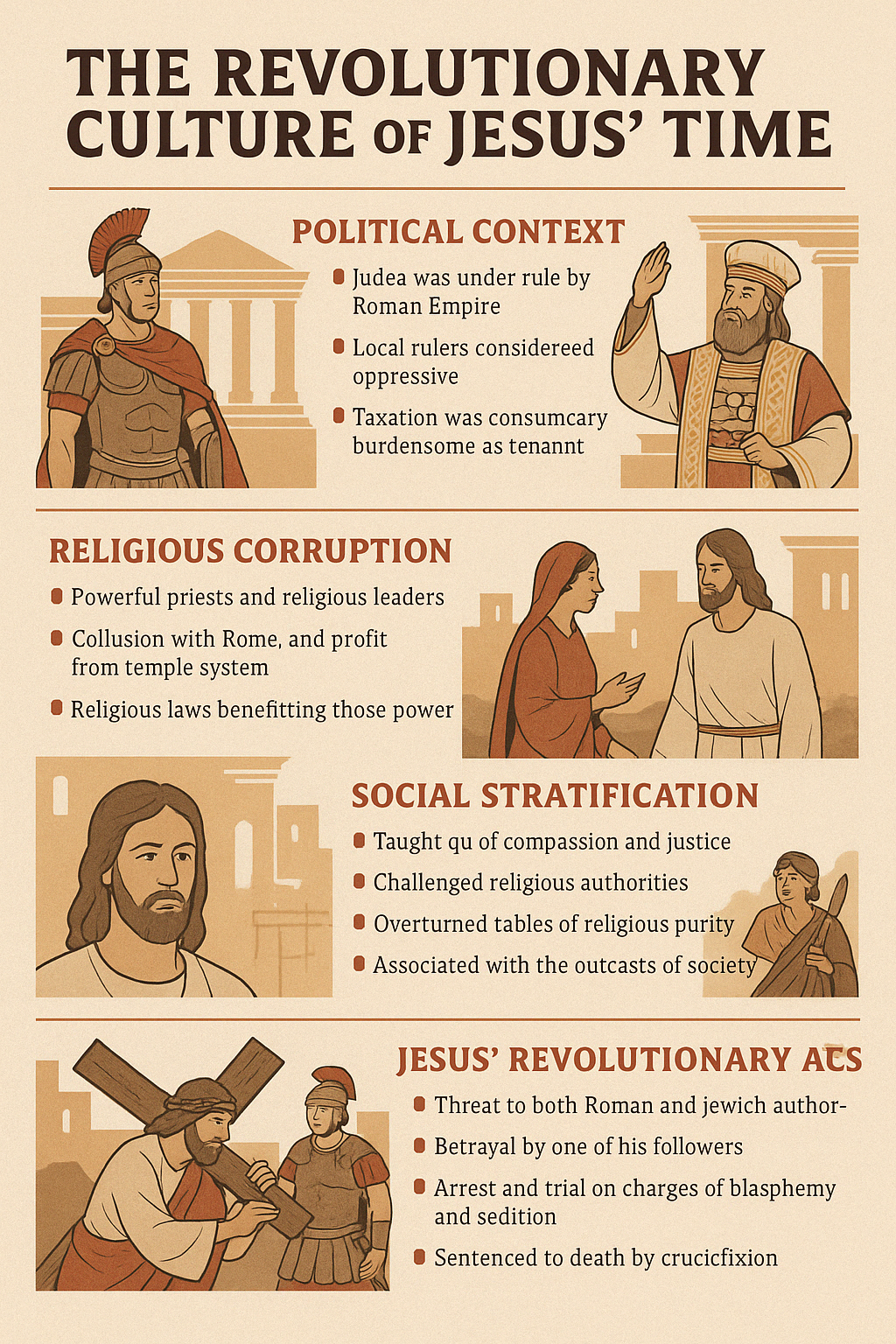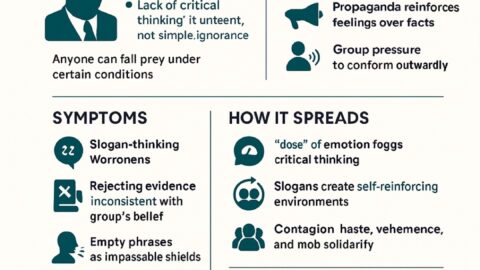Introduction
When Jesus of Nazareth walked the earth, He did so in a world teeming with political oppression, religious corruption, social stratification, and cultural despair. His message and actions were not only spiritually revolutionary, but also socially and politically dangerous to the existing power structures.
To truly understand why Jesus’ ministry resulted in His crucifixion, we must first grasp the full cultural, religious, and political landscape of first-century Judea under Roman rule.
The Political Context: Roman Occupation
- Roman Domination
- Judea was a province under Roman occupation, ruled by a Roman-appointed king (Herod the Great and later his sons) and governed through Roman-appointed officials like Pontius Pilate.
- Heavy taxation burdened the Jewish people, funding both Rome’s imperial projects and lining the pockets of corrupt officials.
- Brutality and Fear
- Rome maintained peace (Pax Romana) through force, not freedom.
- Public crucifixions and violent suppression of revolts (like those led by zealots) were common to terrify and control the population.
- Client Kings and Puppet Leaders
- Figures like Herod Antipas were seen as sellouts, collaborating with Rome to maintain personal power while exploiting their own people.
Thus, the environment was one of resentment, fear, poverty, and political manipulation.
The Religious Climate: Corruption and Hypocrisy
- The Temple System
- The Second Temple in Jerusalem was not only a center of religious life but also of economic commerce.
- High priests were often appointed not based on lineage but on Roman approval or corruption, creating a priesthood deeply entangled in political power.
- The Pharisees, Sadducees, and Scribes
- Pharisees were the religious elites who outwardly kept the Law but often used it to burden the people.
- Sadducees, who controlled the temple, were wealthy aristocrats aligned with Rome, rejecting spiritual ideas like resurrection.
- Scribes (experts in the law) reinforced a legalistic system that trapped ordinary people under impossible standards.
- Legalism vs. Heart
- Religion had become a matter of ritual and appearance, with little genuine compassion, mercy, or justice.
Jesus directly challenged this structure by:
- Eating with sinners.
- Healing on the Sabbath.
- Calling out hypocrisy (e.g., “whitewashed tombs”).
- Purifying the Temple.
The Social Structure: Deep Stratification
- Class Divides
- Jewish society had extreme divisions between rich and poor.
- Tax collectors were despised collaborators with Rome.
- Women, sick people, lepers, Gentiles, and the poor were marginalized and often treated as unclean or unworthy.
- Honor and Shame Culture
- Status, reputation, and public image were crucial.
- To associate with “shameful” people was to risk social death.
Jesus subverted this entire system:
- He embraced the outcasts.
- He forgave prostitutes and tax collectors.
- He healed and touched the untouchable.
Christ’s Revolutionary Behavior
- Challenging Religious Authority
- He publicly debated and humiliated religious leaders.
- His Sermon on the Mount reinterpreted the Law as a matter of the heart, not just behavior.
- Flipping Commerce Tables
- Jesus’ cleansing of the Temple by overturning the tables of money changers was a direct assault on the Temple’s financial operations.
- He condemned it as a “den of thieves”, accusing them of commercializing worship and exploiting the poor.
- Redefining Kingship
- He spoke of a Kingdom of God, not Caesar.
- His entry into Jerusalem on a donkey fulfilled messianic prophecies, suggesting a new king—but one without an army.
- Preaching Radical Love and Forgiveness
- “Love your enemies.”
- “Blessed are the meek.”
- “The first will be last, and the last first.”
- Warning of Judgment
- Jesus warned that the religious and political leaders were facing judgment, threatening their authority directly.
Why His Teachings Led to Crucifixion
- Religious Threat:
He delegitimized the existing religious power structure. - Political Threat:
He undermined Roman authority by claiming loyalty should be to God first, not Caesar. - Social Threat:
He empowered the poor and marginalized, potentially destabilizing the fragile social order.
Thus:
- Religious leaders sought to silence Him (blasphemy).
- Roman officials agreed to crucify Him (sedition).
Crucifixion was reserved for rebels, traitors, and the most dangerous criminals.
Jesus was seen as all three.
Conclusion: Christ’s Legacy
Jesus’ crucifixion was not simply because He was a good teacher or a moral leader.
He exposed the lies, unmasked corruption, empowered the powerless, and challenged the most powerful structures of His day.
He called humanity back to truth, compassion, justice, and direct relationship with God, independent of human institutions.
This was, and remains, the most revolutionary act in history.
And though the authorities tried to kill the message by killing the messenger, they only amplified it.
The stone was rolled away—and so was the old world.







